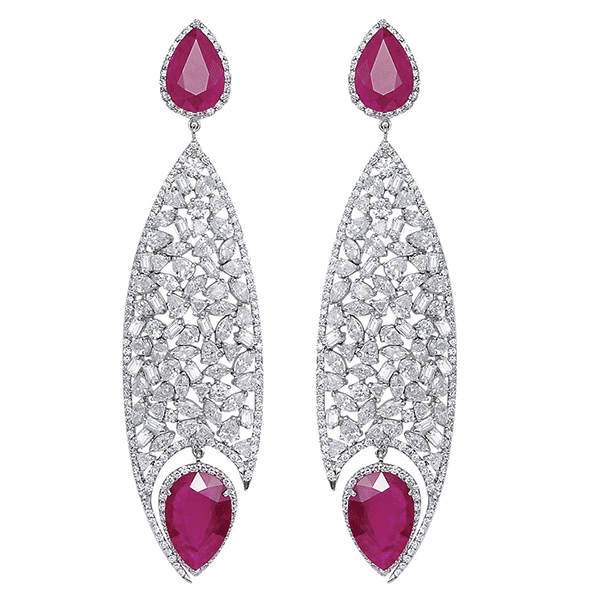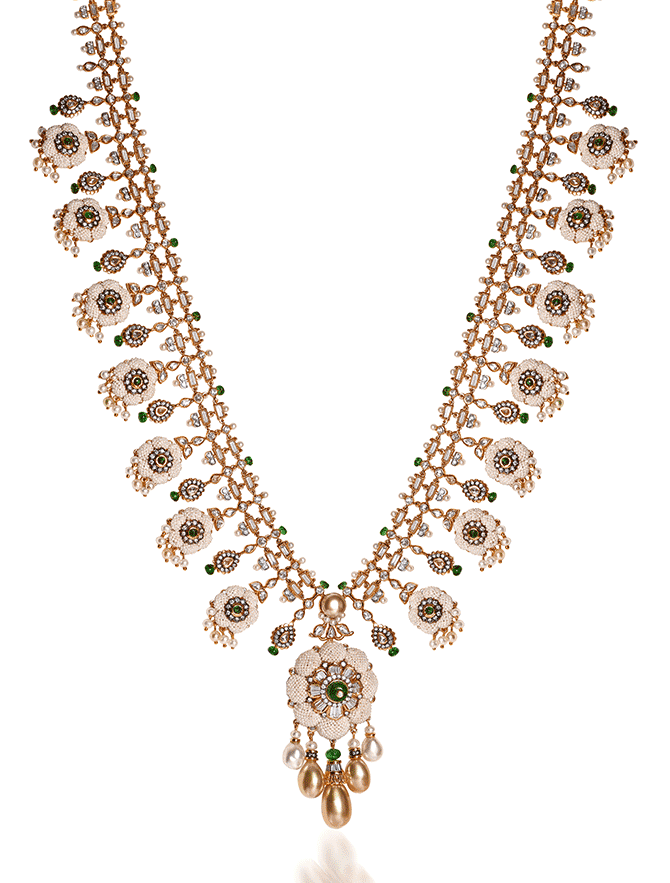
Visitor turnout at the India International Jewellery Show (IIJS) Premiere 2019 show, held Aug. 8–12 in Mumbai, was high, but sentiment was clouded by concerns over a global economic slowdown.
Indian jewelers had mixed views over whether barriers to Chinese exports to the U.S. could help boost the Indian diamond and jewelry market share, displacing competition from China.
“Business will come to India,” said Alkesh Shah, vice chairman of Gold Star Jewellery. “But are we in a position to digest all of this new business? The answer is no, because we do not have the space or the factories. Nevertheless, our business can increase by 10 to 15% easily. We will definitely benefit.”
Priyanshu Shah, executive director of A’Star Jewellery, concurred. “Business will grow because more business will come to countries which are cheaper, so India will definitely benefit,” he said.
However, Rajesh R. Shah, a partner of Surat-based diamond manufacturer Venus Jewel, said he did not believe the trade war would affect Indian exporters “because China’s product line is totally different than India’s,” he said. “China has smartly already devalued their currency, so ultimately the net effect would not be so great.”
Exhibitors showing at IIJS said they were concerned that the U.S.-China trade dispute could trigger a global economic slowdown, potentially dragging on their exports to key markets such as the U.S., which comprises 23% of total goods in this sector.
“Indian exporters need to gear up for opportunities brought by the trade war,” said Pramod Kumar Agarwal, chairman of the Gem and Jewelry Export Promotion Council, organizers of the fair. “China’s exports to the USA are around $6 billion, now affected as U.S. imposed a 10% duty on all gem and jewelry imports from China.”
Exhibitors were also worried about the impact of surging gold prices, and some jewelers talked about the possibility of a new trend emerging of combining lower-quality or smaller diamonds with gold in order to keep jewelry costs accessible.
The domestic market, however, is a different story. “Current high gold prices do not affect our business in India,” said Ajay Sobhraj, founder and chairman of Au Finja, which manufactures gold bangles using high-tech CNC machines. “Indians understand when the Indian rupee devalues annually, gold appreciates.”
Exhibitors also expressed concerns over the potential impact of increasing supplies of lab-grown diamonds on their natural diamond manufacturing businesses.
Most of the world’s natural diamonds are processed in India.
Lab-grown diamonds are “not a significant part of the industry yet,” said Gold Star’s Alkesh Shah. But they pose “a threat to natural diamonds, which is bound to grow. Only time will tell the extent of this threat.”
Other trends referred to by Indian exhibitors included a growing taste for platinum jewelry, supported by the low cost of platinum compared to gold. The Indian domestic platinum jewelry market has grown steadily from small beginnings over the past decade, industry executives said.
Exhibitors also spoke of rising demand for natural colored diamonds in the Indian market. “There is an increased acceptance of fancy-shaped diamonds in India,” said Milan Choksi, CEO of Moksh, part of the Tanvirkumar Group. “Among design-focused retailers, the use of different colors of gold is more popular.”

“There is an increased use of a multitude of raw materials in the same piece of jewelry, such as rose cuts, baguettes, round diamonds, and pearls,” Choksi added. “This enables the independent stores and boutiques to showcase pieces with distinction and complexity.”
Top: Earrings by IIJS exhibitor Bapalal Keshavlal
- Subscribe to the JCK News Daily
- Subscribe to the JCK Special Report
- Follow JCK on Instagram: @jckmagazine
- Follow JCK on X: @jckmagazine
- Follow JCK on Facebook: @jckmagazine